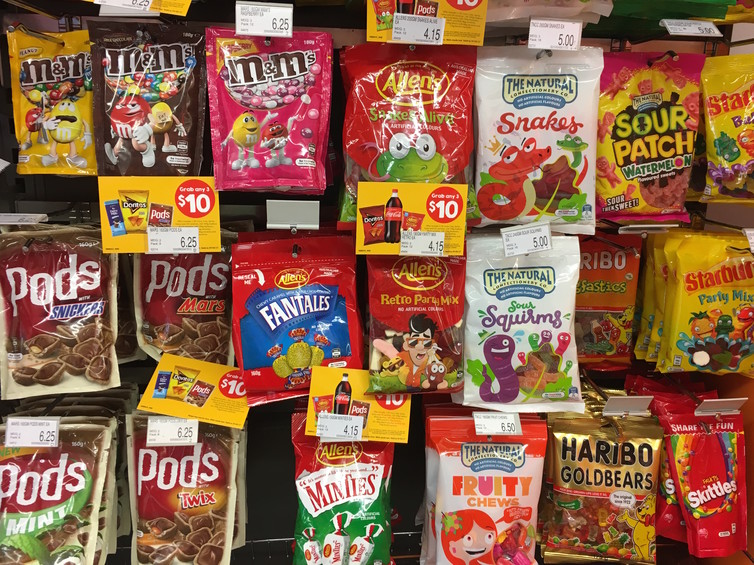
This article by Bernd Weber, University of Bonn, was originally published on The Conversation as Junk food packaging hijacks the same brain processes as drug and alcohol addiction.
The Conversation, CC BY Bernd Weber, University of Bonn
Food is important for our survival, which is why all living beings have developed an urge for high energy foods, like those high in sugar and fat. Historically, this hadn’t been an issue, as energy dense foods weren’t always as available as they are today.
But in modern societies, we not only have easy access to cheap, high-energy food, we also have marketing companies pushing them at us. Food packaging plays a big part in triggering brain processes that influence our food choices – similar brain processes that get us stuck on addictive behaviours.
How our brain works in addiction
Some people who eat too much high-calorie food show similar behavioural patterns to those with addictions. An important behavioural component of addiction is a longing to experience the drug again and again, while in many cases, regretting that behaviour. This distinction between wanting something but not necessarily liking it is shown in many studies.
In the 1950s, two Canadian physiologists ran experiments with electrodes implanted in specific brain regions of rats. The rats were then given the opportunity to stimulate these brain regions, later termed “reward centres”, by pressing a button. Once they started pressing the stimulation button, they stopped doing anything else, which was the first hint of a strong behavioural reinforcing mechanism.
Since then, researchers have shown that this reward centre of the brain – termed the “ventral striatum” – is also involved in substance addiction, such as to heroin or cocaine. Just showing people drug-related pictures led to a strong activity in the parts of the brain related to craving for the drugs.
How our brain responds to junk foods
With methods like functional magnetic resonance imaging (fMRI), which allows us to measure brain activity in healthy volunteers, researchers have started to investigate processes underlying how we eat and view foods.
Such studies robustly show that images of high caloric foods, like chocolate bars or cakes, lead to a stronger activity in the reward areas of the brain, in contrast to apples or salads.
Longitudinal studies, which follow people over a period of time, have shown that the stronger the reaction in the brain’s reward areas when confronted with these foods, the more weight people will gain over the next year.
These insights have made scientists think about how they could intervene to make people less reactive to foods high in calories. One important mechanism, which was researched by a team in California, is that of self-control.
Volunteers were able to regulate the reward-related brain activity towards junk food. While in an MRI machine, they were instructed to focus on health attributes while making choices for healthier food options. When doing so, another region of the brain strongly involved in self-control (dorsolateral prefrontal cortex) was more active and regulated the spontaneous rewarding brain activity.
The main problem, though, is that people are not capable of applying self-control over longer periods.
The impact of marketing
We may think our eating decisions are mainly driven by rational factors such as weighing up the different attributes of products – for example, prices and content. But research shows we are strongly influenced by environmental factors that nudge us into making different decisions.
Designs of packages, brands or claims on food products also influence how we value and consume them. These influences are of course extensively used by companies to affect consumers’ choices.
Companies make use of bright colours, and well-known characters from movies or other celebrities to distinguish their products from others. These visual properties act as signals that influence the way we value products and make people more likely to be attracted to certain items over others.
Some studies in children show food-directed commercials influence the amount of calories they consume, with this effect especially pronounced in overweight children.
But the fact contextual factors play a strong role in the perception of foods can also be used to help consumers in their choices.
We conducted a study in school children where we presented the same cereals in different packages. One of these was especially designed to be more appealing to children – we created cartoon characters and placed them on the package.
The same cereal not only tasted better when it was in the more appealing package, but children were also willing to make more effort to receive it (by more strongly pressing on a specially designed hand lever).
This influence of marketing on the actual taste experience has also been referred to as the marketing placebo effect. Expectations consumers may have about a known brand or a nice design can lead to actual differences in taste and consumption patterns, probably by acting on the human reward circuitry and raising the subjective pleasure of the taste experience.
Bernd Weber, Professor, Centre for Economics and Neuroscience, University of Bonn
This article was originally published on The Conversation. Read the original article.

